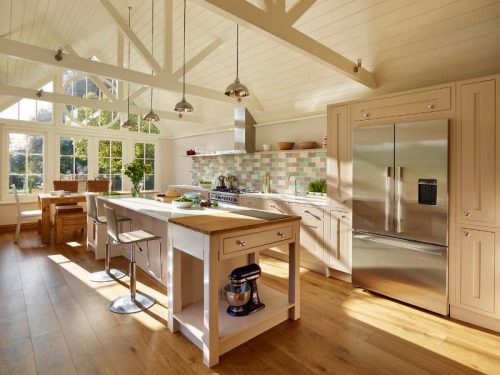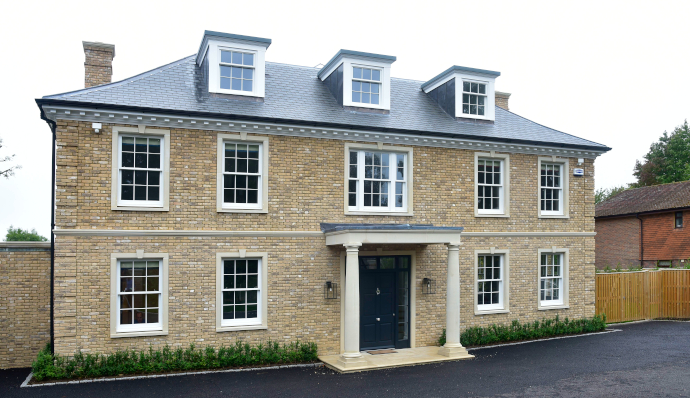Spot the difference – understanding garden rooms, orangeries and conservatories
Monday, April 23 , 2018

Spot the difference – understanding garden rooms, orangeries and conservatories BLOG TAKEOVER by Westbury Garden Rooms
Open up any glossy home magazine and you’ll see pictures of beautiful houses adorned with glazed additions that add space and light in a way that radically transforms the entire look of the property both internally and externally. Easy to see why they’re so popular, but not always so easy to identify which product you are hankering after.
This is a brief guide to understanding the different glazed options available and the subtle architectural design differences that set them apart.
What they all have in common
Garden rooms, orangeries and conservatories are all multi-purpose rooms that incorporate tall panes of glass, mounted on low-level walls that draw the eye to the outside surroundings. This creates a connection between the home and garden, that allows users to enjoy the beauty of outdoors from within.
To maximise the flow of light and visual union with the outside, all three products typically use French doors or stacking doors that provide access to the surrounding garden or patio area, opening wide to allow free flow between the inside and the garden.
Orangeries
Orangeries were first documented in England during the 17th century and were introduced to emulate Italian gardens, during an era when glass was the height of fashion and a reflection of wealth; the original purpose of an Orangery was to protect delicate citrus plants from winter damage. Orangeries typically have a brickwork base which extends up to the roof and tall glazed windows. An orangery has a flat roof with a peripheral margin that incorporates a multi-paned glazed roof lantern which lets in the light, but the flat roof margin protects occupants and plants from direct sunlight and heat. Orangeries are a popular choice for kitchen extensions since the roof lantern is a strong focal point for the kitchen and brings in plenty of natural light, but the protection for the peripheral roof margin helps to maintain room temperature and provides adequate ventilation. Companies like Chilstone can make stone window surrounds to blend with the existing windows of your house.

Conservatories
In contrast to an orangery, a conservatory has a 100% fully glazed roof and this is typically pitched in order to let in the maximum amount of light and heat into the room below. Like an orangery, a conservatory is normally housed on a dwarf brick base, however it will usually have fully glazed sides. Conservatories have fallen a little out of favour in recent years following bad publicity about the devaluing effect that a low value uPVC bolt-on conservatory can have on house prices, however certainly within the high-end timber market, the reverse is true with well-crafted bespoke conservatories still demonstrating the power to wow in real estate. In the right setting a well-designed and well-made conservatory can be simply stunning.

Garden Rooms
The principle difference between a garden a room and the other two types of glazed extension is the roof, with a garden room roof being largely solid, and typically slate or tiled. Garden rooms are also normally built on brickwork bases, and this sometimes extends up to the roof and adjoining walls of the house. The rest of the building is often glazed in a style which reflects that of the house that it is adjoined to. Pitching the roof on a garden room creates vaulted ceilings and a gable end that can be glazed to maximise the amount of natural light coming. Glazed gables are also a very stylish option that adds height and therefore impact to the building aesthetic. A garden room is a popular choice for those that are worried about the impact of high levels of glazing and owing to its more traditionally solid roof, can feel like a more organic extension of the main house.

Three great choices in height, space and light
All three of these options, when designed correctly, are a great addition. They offer up height, space and light and bring the beauty of the outside, within. This can also bring fresh focal points to the house from the garden, showcasing elements such as pathways and statues in new ways that draw the eye and create new avenues of intrigue. And in country where the weather does not always provide inhabitants with the opportunity to get out as often as they’d like, a garden room, conservatory or orangery is a great way to secure that relationship with your garden all-year round.
With thanks to our friends at Westbury Garden Rooms for providing this blog post.

Designed by Brand Skillings Ltd | Website managed by Weekend


